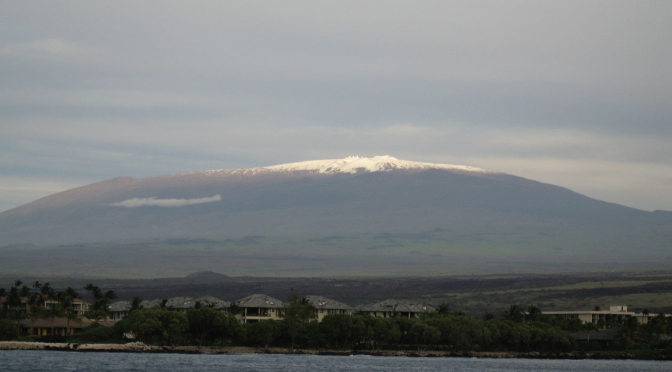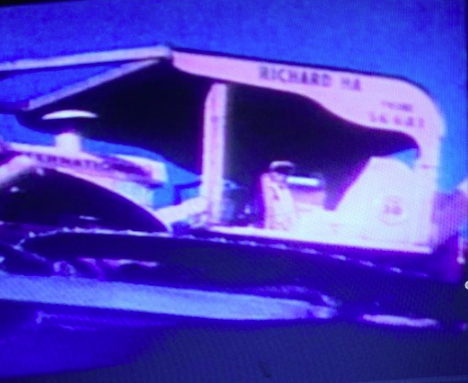Peter Apo, Office of Hawaiian Affairs trustee, recently talked about something that really struck me: He said the claim that the whole of Mauna Kea is sacred cannot be validated.
One thing that had been puzzling him, he says, is that in previous cultural clashes here in Hawai‘i, scholars always participated – but this time they were silent.
“With the TMT, there was this tremendous silence,” he said. “No one was speaking out.” So, he said, he did his own research, consulting with 12 or 13 leading scholars on the topic.
Cultural claims, he said, are validated three ways: by archaeology, oral tradition (“such as the Kumulipo”), or through present-day scholars.
“And the litmus test is there has to be a historical basis for that belief system or practice,” he said. “You have to show it was exercised in the past. And you have to have a pattern of frequency. None of that was present, at least in my foray in the research.”
“Long story short,” he says, “the claim [of the entire mountain being sacred] could not be validated.”
He write about this in more detail at Let There Be Light on the TMT at Civil Beat:
This research has led me to some conclusions. First, there are indeed places on Mauna Kea that are sacred. These are places where Hawaiians have continuously participated in traditional and customary practices; so there are unquestionably specific geo-cultural sites on Mauna Kea that are protected, and the practices that are associated with these sites meet all the defining criteria of being traditional and customary.
But the extension of sacredness to the entire mountain and the air column above it gives rise to questions about how much cultural validation there is for the idea that this pre-empts any and all other uses of the mountain.
I found no documentation indicating that Mauna Kea, as a whole, is sacred. I could not find any reference to any blanket of sacredness over the entire mountain and the air column in any of the usual sources of validation — not even in the Kumulipo Hawaiian creation-origin chant, or in the writings of Native Hawaiian historians of the 19th century like Samuel Kamakau, David Malo, John Papa ‘I‘i and Kepelino.
Beyond the blanket-of-sacredness claim, there is nothing else on record to suggest any validated sacred places would be disturbed by the construction or operation of the TMT.
Validated sacred places include the peaks of Pu‘u o Kūkahau‘ula, Pu‘u Poli‘ahu and Pu‘u Lilinoe, Lake Waiau, and various heiau (temples), ‘ahu (altars), ana (caves), lua kā ko‘i (quarries), and ilina (burials).
In fact, I believe the decision about the TMT’s location was made to ensure that no sacred site was violated, nor access to any sacred site impeded. The telescope was also sited below the summit to minimize its visual obtrusiveness. Read the rest
This rings very true to me.
My Pop helped to bulldoze the road to the summit of Mauna Kea back in about 1964, and when I think back to that time, none of my Hawaiian relatives at Maku‘u ever said one word against it. No one ever even hinted it was against religious and cultural practices. I don’t remember our relatives ever telling us that the mountain was forbidden territory.
Pop was proud of what he was doing, and my brother Robert used to fuel up and service his bulldozer.
See the name at the top of the TD 30? That’s my dad. (I’m a junior.) This picture of my Pop operating his bulldozer on the summit of Mauna Kea is from a PBS clip that you can see here.
There was no mention of anyone up on the mountain protesting when Pop was building the road, because there wasn’t anybody protesting. There was never any feeling he was doing anything against the culture. There was no discussion about it, period.
Peter Apo said something that makes so much sense to me:
“The TMT presents probably the greatest opportunity – the greatest cultural opportunity, religious opportunity – that we will ever have to do the one thing that is at the center of every cultural group. That is, search for the ancestors. Our story of creation begins with the night of Pō, with the darkness. I’m assuming that at some point in time, with projects like the TMT, we will actually be able to go back and find the Night of Pō. I cannot think of anything more significant than that.”
I agree, and I don’t think it was a bad thing that Pop helped build that road. We humans are always trying to climb up to the top of a mountain to see what’s on the other side. I’m curious to see back in time.
My concern is that we are shutting off the opportunity to possibly learn the answer to the greatest question mankind ever asked: “I wonder what’s on the other side?”


